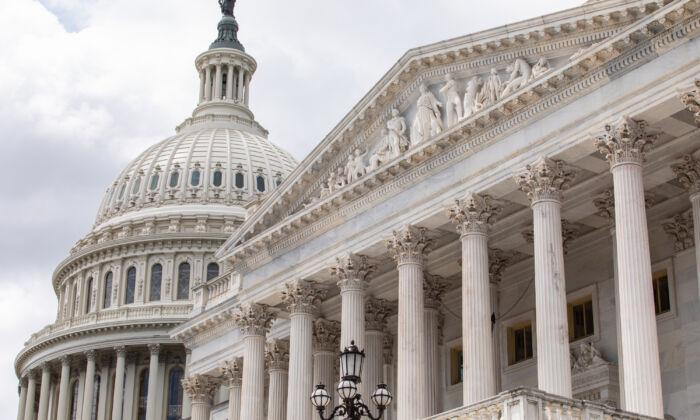Even before the recent spate of spending legislation, the authoritative Congressional Budget Office (CBO) warned of the precarious state of Washington’s finances. Its figures show that the relentless growth in entitlements will push up budget deficits and add to the nation’s already heavy accumulation of public debt.
Here, in broad strokes, is what the CBO expects. Federal revenues from all sources will grow in tandem with the economy, taking, on average, slightly more than 18 percent of GDP each year. The spending side of the ledger will expand faster. Federal outlays will jump to 25.8 percent of the economy by the mid-2030s from 23.8 percent this year. They'll then climb to about 28.9 percent by mid-century, a relative expansion of 5.1 percentage points.
According to the CBO, Social Security, Medicare, Medicaid, and lesser entitlements will rise to 13.7 percent of GDP in the mid-2030s and 14.9 percent by mid-century from an estimated 10.8 percent this year. That 4.1 percentage point relative increase amounts to more than four-fifths of the expected relative rise in all spending. The rest of the spending increase will come from the need for Washington to pay interest on an enlarged debt load, itself the result of past increases in entitlement spending.
In many respects, the CBO’s forecast is a straightforward extrapolation of past trends. For decades, the outsized growth of entitlements has driven government spending to ever greater portions of the economy. Between 1970 and this year, entitlements rose to 10.8 percent of GDP from 7.6 percent. That growth offset the overall budgetary relief that might have accrued to the drop in defense spending to 3.5 percent of GDP from 7.8 percent. So despite this decline in Pentagon demands, overall federal spending has risen to 23.8 of GDP from 18.7 percent.
Bleak as the CBO extrapolation of these trends looks, its estimates may be too optimistic. They assume, for example, that defense spending will hold steady at about 3.5 percent of GDP, but in today’s geopolitical climate, defense outlays are more likely to rise. On entitlements, there are also signs of budgetary optimism. Three considerations offer perspective.

Second, the government has already decided to continue the subsidies under the Affordable Care Act, even though they were set to expire. Especially given how aspects of the IRA suggest enlarged subsidies along these lines, spending in this area will likely accumulate over time to enlarge the portion of the budget and GDP absorbed by entitlements.
None of this is to say that entitlements—already at two-thirds or more of the federal budget–are the wrong way for Washington to spend. That’s a political decision. Economics can only point out that past and likely future practices condemn federal finances to ever-growing debt burdens until Washington takes one of three admittedly difficult steps: 1) get control over entitlements, at least enough to moderate their rapid growth rate, 2) accommodate the ever-increasing demand of entitlements by sacrificing other government services, as was done with defense in the past but in today’s geopolitics no longer seems possible, or 3) tell the voters that they must pay more in taxes so that their representatives don’t have to make these difficult decisions.
As the CBO has made clear, albeit indirectly, these are the only ways to avoid a debt burden that many already describe as unsupportable.





